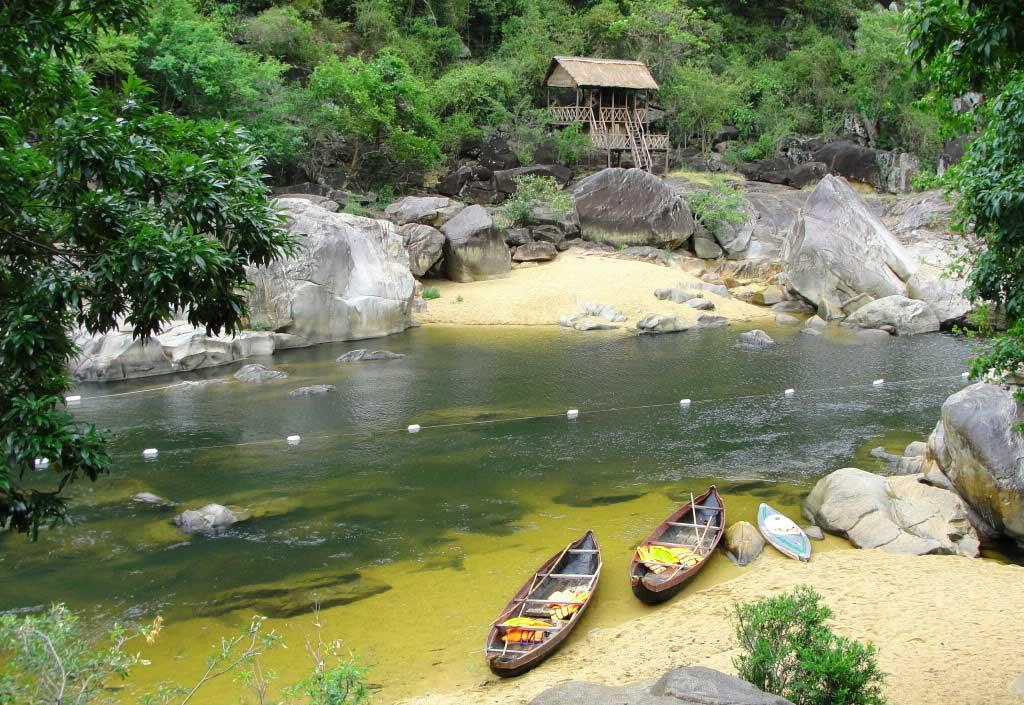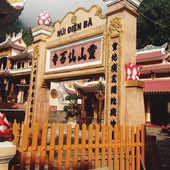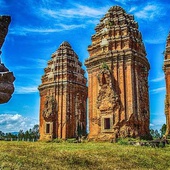Ham Ho
Ham Ho is a downstream part of the Kut River in Tay Son, Binh Dinh, and located 55km NW of Quy Nhon City.
The name Ham Ho stems from a unique phenomenon observed during the dry season. In years marked by drought, the local community would hear many unusual sounds resembling screams and prayers emanating from a bend in the Kut River. This area began to be known as Ham Ho, which translates to ‘Yelling Cellar’. This section of the Kut River stretches just 1 km but remains lush and green year-round with its cool, flowing waters. The riverbanks are flanked by dense forests and towering cliffs, interspersed with intriguing marble outcroppings that exhibit a variety of peculiar shapes. Significant stone formations of interest to visitors include Chess Stone, Flying Fish Stone, and the Gates of Life and Death, also referred to as the Giant’s Feet. Photo: viettravel.com
Photo: viettravel.com
Ham Ho is also renowned for attracting a significant variety of fish, particularly during the flood season. Locals refer to this season as the Contest of Fishes, an event believed to be organized by the Dragon King (the deity governing lakes, rivers, and the oceans). It is said that the fish that wins this contest has the chance to transform into a dragon himself, and thus the area is also known as Vu Mon, which translates to ‘The Fish Gate’. Additionally, the fish that inhabit Ham Ho are noted for their tendency to swim against the river's currents, leaping into the air akin to flying fish, hence the alternative name for this stretch of the river: The Flying Fish.
Useful Information
- Location: Ham Ho
- Best for: Family, Solo
- Entrance: Free
- Hours: All hours
- Distance to city center: 40.0km (24.9 mi)

Ba Mountains (Nui Ba)
Situated South of Dam Thuy Pond in Phu Cat District, Ba Mountains (also called Pho Chinh Mountains) is considered one of the most magnificent mountains in Binh Dinh province.

Ghenh Rang
Ghenh Rang is one of the most attractive destinations in Binh Dinh, located 3km south east of Quy Nhon City.

Duong Long Towers (Nga Towers)
This is a historical relic that represents the most prosperous time of Cham Pa civilization in the 12th Century








